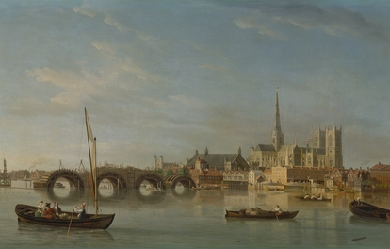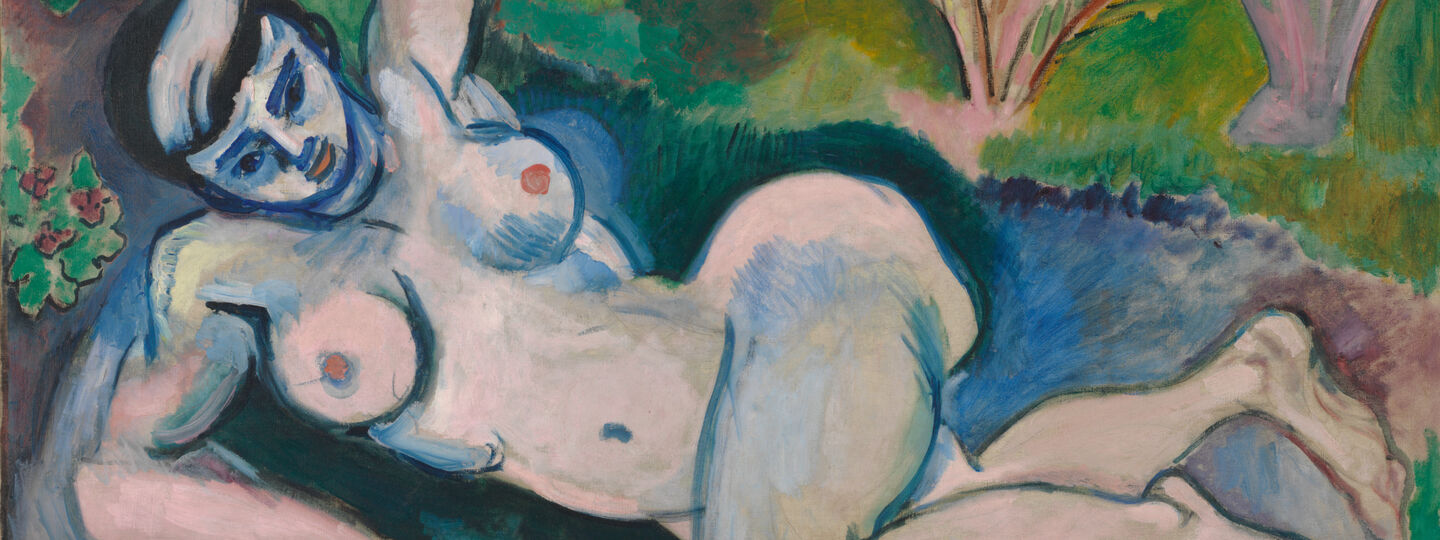
Info
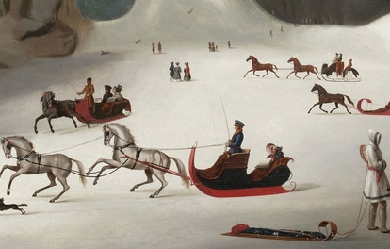
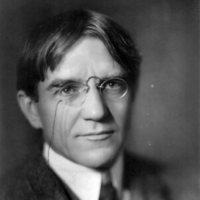
Sir Charles George Douglas Roberts, KCMG FRSC (January 10, 1860– November 26, 1943) was a Canadian poet and prose writer who is known as the Father of Canadian Poetry. He was “almost the first Canadian author to obtain worldwide reputation and influence; he was also a tireless promoter and encourager of Canadian literature. He published numerous works on Canadian exploration and natural history, verse, travel books, and fiction.” “At his death he was regarded as Canada’s leading man of letters.” Besides his own body of work, Roberts is also called the “Father of Canadian Poetry” because he served as an inspiration and a source of assistance for other Canadian poets of his time. Roberts, his cousin Bliss Carman, Archibald Lampman and Duncan Campbell Scott are known as the Confederation Poets. Life Roberts was born in Douglas, New Brunswick in 1860, the eldest child of Emma Wetmore Bliss and Rev. George Goodridge Roberts (an Anglican priest). Rev. Roberts was rector of Fredericton and canon of Christ Church Cathedral, New Brunswick. Charles’s brother Theodore Goodridge Roberts and sister, Jane Elizabeth Gostwycke Roberts, would also become authors. Between the ages of 8 months and 14 years, Roberts was raised in the parish of Westcock, New Brunswick, near Sackville, by the Tantramar Marshes. He was homeschooled, “mostly by his father, who was proficient in Greek, Latin and French.” He published his first writing, three articles in The Colonial Farmer, at 12 years of age. After the family moved to Fredericton in 1873, Roberts attended Fredericton Collegiate School from 1874 to 1876, and then the University of New Brunswick (UNB), earning his B.A. in 1879 and M.A. in 1881. At the Collegiate School he came under the influence of headmaster George Robert Parkin, who gave him a love of classical literature and introduced him to the poetry of Dante Gabriel Rossetti and Algernon Charles Swinburne. Roberts was principal of Chatham High School in Chatham, New Brunswick, from 1879 to 1881, and of York Street School in Fredericton from 1881 to 1883. In Chatham he met and befriended Edmund Collins, editor of the Chatham Star and the future biographer of Sir John A. Macdonald. Early Canadian career Roberts first published poetry in the Canadian Illustrated News of March 30, 1878, and by 1879 he had placed two poems in the prestigious American magazine, Scribner’s. In 1880, Roberts published his first book of poetry, Orion and Other Poems. Thanks in part to his industry in sending out complimentary review copies, there were many positive reviews. Rose-Belford’s Canadian Monthly proclaimed: “Here is a writer whose power and originality it is impossible to deny—here is a book of which any literature might be proud.” The Montreal Gazette predicted that Roberts would “confer merited fame on himself and lasting honour on his country.” As well, “several American periodicals reviewed it favourably, including the New York Independent, which described it as ‘a little book of choice things, with the indifferent things well weeded out.’” On December 29, 1880, Roberts married Mary Fenety, who would bear him five children. The biography by Roberts’s friend Edmund Collins, The Life and Times of Sir John A. Macdonald, was published in 1883. The book was a huge success, going through eight printings. It contained a long chapter on “Thought and Literature in Canada,” which devoted 15 pages to Roberts, quoting liberally from Orion. “Beyond any comparison,” Collins declared, “our greatest Canadian poet is Mr. Charles G.D. Roberts.” “Edmund Collins is probably responsible for the early acceptance of Charles G.D. Roberts as Canada’s foremost poet.” From 1883 to 1884, Roberts was in Toronto, Ontario, working as the editor of Goldwin Smith’s short-lived literary magazine, The Week. “Roberts lasted only five months at The Week before resigning in frustration from overwork and clashes with Smith.” In 1885, Roberts became a professor at the University of King’s College in Windsor, Nova Scotia. In 1886, his second book, In Divers Tones, was published by a Boston publisher. "Over the next six years, in addition to his academic duties, Roberts published more than thirty poems in numerous American periodicals, but mostly in The Independent while Bliss Carman was on its editorial staff. During the same period, he published almost an equal number of stories, primarily for juvenile readers, in periodicals like The Youth’s Companion. He also edited Poems of Wild Life (1888), completed a 270-page Canadian Guide Book (1891), wrote about a dozen articles on a variety of topics, and gave lectures in various centres from Halifax to New York.” Roberts was asked to edit the anthology, Songs of the Great Dominion, but that position eventually went to W.D. Lighthall. Lighthall included a generous selection of Roberts’s work, and echoed Collins’s assessment of six years earlier: “The foremost name in Canadian song at the present day is that of Charles George Douglas Roberts.” Roberts resigned from King’s College in 1895, when his request for a leave of absence was turned down. Determined to make a living from his pen, in 1896 “he published his first novel, The Forge in the Forest,... his fourth collection of poetry, The Book of the Native,... his first book of nature-stories, Earth’s Enigmas,... and a book of adventure stories for boys, Around the Campfire.” Move to New York In 1897, Roberts left Canada, as well as his wife and children, for New York City so that he may work free-lance. Between 1897 and 1898, he worked for The Illustrated American as an associate editor. In New York, Roberts wrote in many different genres, but found that "his most successful prose genre was the animal story, in which he drew upon his early experience in the wilds of the Maritimes. He published over a dozen such volumes between Earth’s Enigmas (1896) and Eyes of the Wilderness (1933).... Roberts is remembered for creating in the animal story, along with Ernest Thompson Seton, the one native Canadian art form.” Roberts also wrote historical romances and novels. "Barbara Ladd (1902) begins with a girl escaping from an uncongenial aunt in New England in 1769; it sold 80,000 copies in the US alone." He also wrote descriptive text for guide books, such as Picturesque Canada and The Land of Evangeline and Gateways Thither for Nova Scotia’s Dominion Atlantic Railway. Roberts famously became involved in a literary debate known as the nature fakers controversy after John Burroughs denounced his popular animal stories, and those of other writers, in a 1903 article for Atlantic Monthly. The controversy lasted for nearly six years and included important American environmental and political figures of the day, including President Theodore Roosevelt. Europe and return to Canada In 1907, Roberts moved to Europe. First living in Paris, he moved to Munich in 1910, and in 1912 to London, where he lived until 1925. During World War I he enlisted with the British Army as a trooper, eventually becoming a captain and a cadet trainer in England. After the war he joined the Canadian War Records Office in London. Roberts returned to Canada in 1925 which “led to a renewed production of verse.” During the late 1920s he was a member of the Halifax literary and social set, The Song Fishermen. He married his second wife Joan Montgomery on October 28, 1943, at the age of 83, but became ill and died shortly thereafter in Toronto. The funeral was held in Toronto, but his ashes were returned to Fredericton, where he was interred in Forest Hill Cemetery. Poetry Orion and Other Poems Roberts’s first book, Orion and Other Poems (1880), was a vanity book for which he had to "pay an advance of $300, most of which he borrowed from George E. Fenety, the Queen’s Printer for New Brunswick, soon to become his father-in-law." Orion was “a collection of juvenilia, written while the poet was still a teenager.” In 1958, the critic Desmond Pacey wrote that “when we remind ourselves that it was published when the poet was twenty... we realize that it is a remarkable performance. It is imitative, naively romantic, defective in diction, the poetry of books rather than life itself, but it is facile, clever, and occasionally distinctly beautiful.... It is the work of an apprentice, who is quite frankly serving under a sequence of masters from whom he hopes to learn his art.” In Divers Tones The title of Roberts’s second book, In Divers Tones "aptly describes the hodgepodge of its contents. The selections vary greatly, not only in style and subject matter, but also in quality.... Among those written between 1883 and 1886... there is evidence of a maturing talent. In fact, it might be argued that at least three of these poems, ‘The Tantramar Revisited,’ ‘The Sower,’ and 'The Potato Harvest,” were never surpassed by any of his subsequent verse.” Songs of the Common Day By the time of Songs of the Common Day, and Ave! (1893), Roberts "had reached the height of his poetic powers.... It is the sonnet sequence of Songs of the Common Day that has established Roberts’ reputation as a landscape poet.... Evidence of the Tantramar setting occurs in lines like “How sombre slope these acres to the sea’ ('The Furrow”), 'These marshes pale and meadows by the sea’ ('The Salt Flats’), and 'My fields of Tantramar in summer-time’ ('The Pea-Fields’). The descriptions are full of evocative details.” Middle period After Roberts turned to free-lance writing in 1895, “Financial pressure forced him to turn his main attention to fiction.” He published two more books of poetry by 1898, but managed only two more in the following 30 years. “As their titles often indicate, the numerous seasonal poems in The Book of the Native (1897) were written with an eye on the monthly requirements of the magazines: ‘The Brook in February,’ ‘An April Adoration,’ ‘July,’ and ‘An August Woodroad.’ Roberts “is generally at his best in the poems in which he depicts these seasonal stages of nature with the palette of a realistic landscape painter.” However, the book also “signalled a shift in his poetic oeuvre away from descriptive, technically tight Romantic verses to more mystical lyrics.” “Most of the nature poetry in Roberts’s New York Nocturnes and Other Poems (1898) was written before he moved to New York. It belongs to a period of upheaval, desperation and overwork, which may at least partly account for its disappointing slackness.... Even ‘The Solitary Woodsman,’ much anthologized and frequently praised, is a series of unremarkable images made tedious by fifty-two lines of irritating rhythm and rhyme.... Roberts seldom looks at New York with the eye of a painter, and never captures its essence with the effectiveness he displays in his best pictures of rural landscape.... Instead of turning an inquiring eye upon urban conditions, he is inclined to retreat from “'he city’s fume and stress’ and 'clamour’ ('The Ideal’).". The first and title section of The Book of the Rose (1903) was a collection of love poetry. "Roberts handling of the symbol sounds artificial at best and sometimes downright fatuous.... Although most of the poems in the second section are unimpressive, there are a few exceptions. “Heat in the City,” noteworthy for being the best poem he ever wrote about city life, effectively evokes the distress and despair of the tenement-dwellers.... The final poem in the book, “The Aim,” is remarkable for its frank self-analysis.” “New Poems, a slim volume published in 1919, shows the drop in both the quantity and quality of Roberts’ poetry during his European years. At least half of the pieces had been written before he left America, some as early as 1903.” Later poems Roberts’s "return to Canada in 1925 led to a renewed production of verse with The Vagrant of Time (1927) and The Iceberg and Other Poems (1934)." Literary critic Desmond Pacey calls this period “the Indian summer of his poetic career”. “Among the best of the new poems” in The Vagrant of Time "is the one with this inspired opening line: ‘Spring breaks in foam along the blackthorn bough.’ In another love poem, ‘In the Night Watches,’ written in 1926, his command of free verse is natural and unstrained, unlike the laboured language and forced rhymes of his earlier love poetry. Its synthesis of lonely wilderness setting with feelings of separation and longing is harmonious and poignant.” “Most critics rank ”The Iceberg" (265 lines), the title poem of the new collection" published in 1934, "as one of Roberts’ outstanding achievements. It is almost as ambitious as ‘Ave!’ in conception; its cold, unemotional images are as apt and precise in their detached way as the warmly-remembered descriptions in ‘Tantramar Revisited.’ Animal stories The Canadian Encyclopedia says that “Roberts is remembered for creating in the animal story, along with Ernest Thompson Seton, the one native Canadian art form.” A typical Roberts animal story is “The Truce”. In his introduction to The Kindred of the Wild (1902), Roberts called the animal story "a potent emancipator. It frees us for a little from the world of shop-worn utilities, and from the mean tenement of self of which we do well to grow weary. It helps us to return to nature, without requiring that we at the same time return to barbarism. It leads us back to the old kinship of earth, without asking us to relinquish by way of toll any part of the wisdom of the ages, any fine essential of the ‘large result of time.’ (Kindred 28)” Critical interest in Roberts’s animal stories "emerged in the 1960s and 70s in the growth of what we now know as Canadian Literary Studies.... But these critics tended as a group to see in the animal stories a masked reference to Canadian nationhood: James Polk 'attempts to subsume the animal genre entirely within the identity crisis of an emerging nation […seeing] the sympathetic stance of Seton and Roberts towards the sometimes brutal fate of the “lives of the hunted” as a larger political allegory for Canada’s “victim” status as an American satellite. (Sandlos 74)'” Margaret Atwood devotes a chapter of her 1971 critical study Survival: A Thematic Guide to Canadian Literature to animal stories, where she states the same thesis: "the stories are told from the point of view of the animal. That’s the key: English animal stories are about the ‘social relations,’ American ones are about people killing animals; Canadian ones are about animals being killed, as felt emotionally from inside the fur and feathers. (qtd. in Sandlos 74; emphasis in original).” Recognition Charles G. D Roberts was elected a Fellow of the Royal Society of Canada in 1893. Roberts was elected to the United States National Institute of Arts and Letters in 1898. He was awarded an honorary LLD from UNB in 1906, and an honorary doctorate from Mount Allison University in 1942. For his contributions to Canadian literature, Roberts was awarded the Royal Society of Canada’s first Lorne Pierce Medal in 1926. On June 3, 1935, Roberts was one of three Canadians on King George V’s honour list to receive a knighthood (Knight Commander of the Order of St. Michael and St. George). Roberts was honoured by a sculpture erected in 1947 on the UNB campus, portraying him with Bliss Carman and fellow poet Francis Joseph Sherman. “In the 1980s,—a hundred years after his first volumes appeared—a major Roberts revival took place, producing monographs, a complete edition of his poems, a new biography, a collection of his letters, etc. A Roberts Symposium at Mount Allison University (1982) and another at the University of Ottawa (1983) included several scholarly reappraisals of his poetry.” Roberts was declared a Person of National Historic Significance in 1945, and a monument to him was erected by the Historic Sites and Monuments Board of Canada in Westcock in 2005. Publications Poetry * Orion, and Other Poems. Philadelphia, Pennsylvania: J. B. Lippincott & Co. 1880. ; also: “Orion, and Other Poems”. Canadian Poetry Press. ; Orion, and Other Poems at Google Books * In Divers Tones. Boston, Massachusetts: D. Lothrop and Company. 1886. ; also: “In Divers Tones”. Canadian Poetry Press. ; In Divers Tones at Google Books * AVE! An Ode for the Shelley Centenary. Toronto: Williamson, 1892. * Songs of the Common Day and, AVE! An Ode for the Shelley Centenary. Toronto, Ontario: William Briggs. 1893. ; Songs of the Common Day and, AVE! An Ode for the Shelley Centenary at Google Books * The Book of the Native. Toronto, Ontario: Copp Clark. 1896. * New York Nocturnes and Other Poems. Boston, Massachusetts: Lamson Wolffe. 1898. * Poems. New York: Silver, Burdett, 1901. * The Book of the Rose. Boston, Massachusetts: L. C. Page & Company. 1903. ; The Book of the Rose at Google Books * New Poems. London: Constable. 1919. * The Sweet o’ the Year and Other Poems. Toronto, Ontario: Ryerson. 1925. ; The Sweet o’ the Year and Other Poems at Google Books * The Vagrant of Time. Toronto, Ontario: Ryerson. 1927. ; The Vagrant of Time at Google Books * The Iceberg and Other Poems Selected Poems of Sir Charles G.D. Roberts. 1934. * Selected Poems of Sir Charles G.D. Roberts. Toronto, Ontario: Ryerson. 1936. * Flying Colours. Miami, Florida: Granger Books. 1942. * Pacey, Desmond, ed. (1955). The Selected Poems of Charles G.D. Roberts. Toronto, Ontario: Ryerson. * Keith, W.J., ed. (1974). Selected Poetry and Critical Prose. Toronto, Ontario: University of Toronto Press. * Pacey, Desmond; Adams, Graham, eds. (1985). Collected Poems of Sir Charles G.D. Roberts. Wolfville, Nova Scotia: Wombat Press. Fiction * The Raid from Beauséjour and How the Carter Boys Lifted the Mortgage. New York: Hunt & Eaton. 1894. ; The Raid from Beausejour and How the Carter Boys Lifted the Mortgage at Google Books * Reube Dare’s Shad Boat: A Tale of the Tide Country. New York: Hunt & Eaton. 1895. ; Reube Dare’s Shad Boat - A Tale of the Tide Country at Google Books * Around the Campfire. Toronto: Musson Book Co. 1896. * Earth’s Enigmas. Boston: Lamson, Wolffe. 1896. ; Earth’s Enigmas: A Volume of Stories at Google Books * The Forge in the Forest. Boston: Lamson, Wolffe. 1896. * By the Marshes of Minas. Boston: Silver, Burdett and Company. 1900. * A Sister to Evangeline. Boston: Silver, Burdett and Company. 1900. * The Feet of the Furtive. London: Ward, Lock & Co. 1900. * The Heart of the Ancient Wood. Boston: L. C. Page & Company. 1902. * The Haunters of the Silences: A Book of Animal Life. London: Thomas Nelson. 1900. * Barbara Ladd. Boston: The Page Company. 1902. * The Kindred of the Wild. Boston: The Page Company. 1902. ; The Kindred of the Wild: A Book of Animal Life at Google Books * The Prisoner of Mademoiselle: A Love Story. Boston: L.C. Page. 1904. * The Watchers of the Trails. Toronto: Copp Clark. 1904. * Red Fox. Boston: L. C. Page & Company. 1905. * The Watchers of the Campfire. Boston: L.C. Page & Company. 1906. * The Heart That Knows. Boston: L.C. Page & Company. 1906. * The Cruise of the Yacht “Dido”: A Tale of the Tide Country. Boston: L.C. Page & Company. 1906. * The Little People of the Sycamore. Charles Livingston Bull illus. Boston: L.C. Page & Company. 1906. * The Return to the Trails. Charles Livingston Bull illus. Boston: L.C. Page & Company. 1906. * In the Deep of the Snow. New York: T.Y. Crowell. 1907. * The Young Acadian Boston. Boston: L.C. Page & Company. 1907. * The Haunters of the Silences. Boston: L.C. Page & Company. 1907. * The House in the Water. Boston: L.C. Page & Company. 1908. * The Backwoodsmen. New York: Macmillan. 1909. * Kings in Exile. New York: Macmillan. 1910. * Neighbours Unknown. London: Ward, Lock & Co. 1910. * More Kindred of the Wild. London: Ward, Lock & Co. 1911. * Babes of the Wild. Warwick Reynolds, illus. London: Cassell. 1912. * Children of the Wild. Paul Bramson, illus. New York: Macmillan. 1913. * A Balkan Prince. London: Everett & Co. 1913. * Hoof and Claw (reprint ed.). New York: Macmillan. 1920 [1914]. * The Secret Trails. New York: Macmillan. 1916. * The Ledge on Bald Face. London: Ward, Lock, & Co. 1918. * In the Morning of Time. New York: Frederick A. Stokes. 1919. * Wisdom of the Wilderness. Read Books. 2013 [1923]. ISBN 978-1-4733-0956-2. * They Who Walk in the Wilds. Read Books. 2013 [1924]. ISBN 978-1-4733-1140-4. * Eyes of the Wilderness. New York: Macmillan. 1933. * Further Animal Stories. Dent. 1935. * The Last Barrier and Other Stories. Toronto: McClelland & Stewart. 1970. * Ware, Martin, ed. (1992). The Vagrants of the Barren and Other Stories of Charles G.D. Roberts. Ottawa, Ontario: Tecumseh. ISBN 978-0-9196-6235-3. Non-fiction * A History of Canada. Boston, Massachusetts: The Page Company. 1897. * The Canadian Guide-Book: The Tourist’s and Sportsman’s Guide to Eastern Canada and Newfoundland. New York: D. Appleton 1891. * Discoveries and Explorations in the Century. London: Linscott. 1906. * Canada in Flanders (1918)– non-fiction Edited * Poems of Wild Life. London: W. Scott, 1888. * Canada Speaks of Britain and Other Poems of the War. Toronto: Ryerson, 1941. Papers * Sir Charles G. D. Roberts papers. Charles George Douglas Roberts; Linda Dumbleton; Rose Mary Gibson. Kingston: Queen’s University Archives, {c.1983}. * The Collected Letters of Sir Charles G.D. Roberts. Fredericton, NB: Goose Lane, 1989. References Wikipedia—https://en.wikipedia.org/wiki/Charles_G._D._Roberts
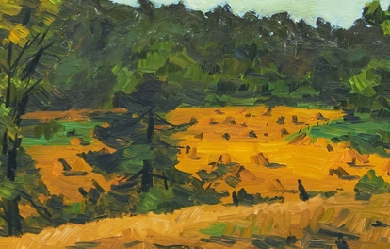
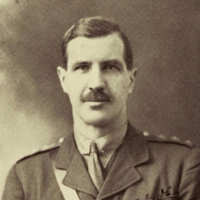
Theodore Goodridge Roberts (July 7, 1877– February 24, 1953) was a Canadian novelist and poet. He was the author of thirty-four novels and over one hundred published stories and poems. He was the brother of poet Charles G.D. Roberts, and the father of painter Goodridge Roberts. Life He was born George Edwards Theodore Goodridge Roberts in Fredericton, to Emma Wetmore Bliss and Anglican Rev. George Goodridge Roberts. The poet Charles G.D. Roberts, and the writers William Carman Roberts and Jane Roberts MacDonald, were his siblings. He published his first poem in 1899, when he was eleven, in the New York Independent (where his cousin Bliss Carman was working), and his first prose piece (a comparison of the Battle of Waterloo and the Battle of Gettysburg) in the Century two years later. Roberts attended Fredericton Collegiate School, though (since school records were lost in a fire) the exact years are unknown. He later went to University of New Brunswick (UNB), but left without graduating. He published poetry in UNB’s University Magazine. In 1897 he moved to New York City, living with his brothers Charles and William and working at The Independent. In 1898 the magazine sent him to Cuba, as a special correspondent, to cover the Spanish–American War. While on the island he contracted malaria—he was sent back to New York and consulted specialists, who sent him back to Fredericton “to die.” An unnamed surgeon saved Roberts’s life, and he was nursed back to heath by Frances Seymour Allen (whom he would subsequently marry). The next year he travelled to Newfoundland, where he helped to found and edit The Newfoundland Magazine. He published his first book of poetry (Northand Lyrics, an anthology edited by Charles G.D. Roberts and featuring his three siblings) in 1899, and his first novel, The House of Isstens, in 1900. In 1901 Roberts sailed on a barkentine to Brazil. In 1902 he returned to Fredericton and briefly edited a second magazine, The Kit-Bag. Roberts married Frances Seymour Allen in November 1903, and they had a two-year honeymoon in Barbados where their first child was born. They would have four children: William Goodridge, Dorothy Mary Gostwick, Theodora Frances Bliss and Loveday (who died as an infant). Roberts averaged three novels a year from 1908 until 1914. At that time his “many novels of adventure and romance” already enoyed a “wide popularity in English-speaking lands.” A former militiaman, Roberts re-enlisted in 1914 when World War I broke out, serving as a lieutenant in the 12th Canadian Infantry Battalion, commanded by Lt.-Col. Harry Fulton McLeod of Fredericton—Roberts’ entire family followed him to England. When the 12th Battalion was assigned to a reserve and training roll in early 1915, Roberts was transferred to a position perhaps better fitted to his combination of military knowledge and literary skill. "In the summer of 1915, he was transferred to the Canadian War Records Office at the request of Max Aitken, Lord Beaverbrook. Roberts wrote official reports and battlefield accounts and published three works in collaboration with others." He was promoted captain early in 1916. When Roberts was in Europe he left his manuscripts and papers, including work not yet published, with a Dr. Wainwright in Saint John, who stored them in his basement. They were destroyed in the spring of 1919 when the Saint John River flooded. In 1929 Roberts wrote a weekly column for the Saint John Telegraph-Journal, “Under the Sun.” From April through September 1930 he edited another small magazine, Acadie. In 1932 he undertook his last major sea cruise, sailing through the Panama Canal to Vancouver and back. The same year he did a cross-Canada reading tour, which “culminated with festivities in Vancouver.” Roberts moved to Toronto in 1935, and in 1937 briefly edited another magazine, Spotlight. In 1939 he relocated to Aylmer, Quebec, where he briefly founded another magazine, Swizzles. He returned to New Brunswick in 1941, and in 1945 moved to Digby, Nova Scotia, where he would die eight years later. He is buried beside Charles G.D. Roberts and Bliss Carman in Fredericton’s Forest Hill Cemetery. Writing The Dictionary of Literary Biography (DLB) says that T.G. Roberts’s “poetry and fiction, staggering in sheer quantity and variety, show at their best Roberts’s most enduring gifts: in his poetry a love of nature well served by a keen eye for local color and detail, a good ear for clean, clear rhythm and rhyme, and a forceful, uncluttered narrative line; and in fiction a talent for presenting his abiding perception of universal struggles between good and evil either in mythic tales of adventure or in regional stories animated by local settings, customs, and dialects.” Of the poems in his 1926 collection, The Lost Shipmate, The Encyclopedia of Literature commented: "Had this volume appeared forty years earlier it might have won for Theodore a reputation equal to that of his brother Charles or of Bliss Carman. Poems such as ‘The sandbar’ and ‘Magic’ are unmatched in Canadian poetry for a facility and clarity of image suggestive of high-realist painting. However, much of what Roberts wrote has been forgotten with time, or has not stood the tests of time and changing fashion. The Merriest Knight The writing that Roberts is most likely to be recognized for today is The Merriest Knight, his collection of Arthurian tales. This looks like the one book by Roberts currently in print - ironically, considering that it was never published as a book during Roberts’s lifetime. Roberts began to write Arthurian fiction in the 1920s; most of these stories, though, were published in the late 1940s and early 1950s in the fiction magazine Blue Book. Roberts planned to publish them as a collection, but died in 1953 before he could do so. In 2001 Mike Ashley, editor of the Mammoth publishing group, brought them out under his Green Knight imprint. A review for SFSite called the collection’s writing “polished,” “erudite,” and “eminently readable,” but “somewhat tame”: “literature for the afternoon tea and crumpets crowd– in a word 'polite’ Arthurian fiction.” Still, it concluded, “if you’re looking for something a bit more upbeat, some Arthuriana-lite, The Merriest Knight is just the book for you.” Recognition The University of New Brunswick awarded Roberts a Doctorate of literature in 1930. He was elected a Fellow of the Royal Society of Canada in 1934. Publications Fiction * The House of Isstens. Boston: L.C. Page, 1900. * Hemming the Adventurer. Boston: L.C. Page, 1904. * Brothers in Peril: A Story of Old Newfoundland, 1905. Boston: L.C. Page & Company, 1905. * Red Feathers: a story of remarkable adventures when the world was young. Boston: L.C. Page, 1907. Toronto: McClelland & Stewart. ISBN 978-0-7710-9227-5 * Captain Love. Boston: L.C. Page & Company, 1908. * Flying Plover: His Stories, Told Him by Squat-by-the-Fire. Boston: L.C. Page, 1909. * A Cavalier of Virginia: a romance. Chicago: M.A. Donohue, 1910. * Comrades of the Trails. Boston: L.C. Page & Company, 1910. * Love on a Smokey River. 1911. * A Captain of Raleigh’s: a romance. Boston: L.C. Page & Company, 1911. * A Soldier of Valley Forge. with Robert Neilson Stephens. Boston: L.C. Page, 1911. * Blessington’s Folly. London: John Long, 1912. * Rayton: a backwoods mystery. Boston: L.C. Page, 1912. * The Harbor Master. Chicago: M.A. Donohue, 1913. * Two Shall Be Born. New York: Cassell, 1913. * The Wasp. Toronto: Bell & Cockburn, 1914. * The Toll of the Tides. 1914. * In the High Woods. London: John. Long, 1916. * Forest Fugitives. Toronto: McClelland, Goodchild & Stewart, 1917. * The Islands of Adventure. London; Toronto: Hodder and Stoughton, 1918. * Jess of the River. London: John Long, 1918. * The Exiled Lover. London: John Long, 1919. * Honest Fool. New York: F.A. Munsey, 1925. * The Master of the Moosehorn and Other Backwoods Stories. London; Toronto: Hodder and Stoughton, 1919. * Moonshine. London: Hodder and Stoughton, [1920?]. * The Lure of Piper’s Glen. Garden City, NY: Doubleday, Page, 1921. * The Fighting Starkleys. George Varian illus. Boston: Page, 1922. * Musket House. 1922. * Tom Akerley: his adventures in the tall timber and at Gaspard’s clearing on the Indian River. Boston: L.C. Page, 1923. * Green Timber Thoroughbreds. New York: Garden City, 1924. * The Stranger from Up-Along. Garden City, NJ: Doubleday, Page & co., 1924. * The Red Pirogue: a tale of adventure in the Canadian wilds. Boston: L.C. Page, 1924. * The Oxford Wizard. Garden City, NY: Garden City Pub., 1924. * The Lost Shipmate. Toronto: Ryerson, 1926. * The Golden Highlanders. Boston: L.C. Page, 1929. * The Merriest Knight: The Collected Arthurian Tales of Theodore Goodridge Roberts. Mike Ashley ed. Green Knight, 2001. ISBN 978-1-928999-18-8 Non-fiction * Patrols and Trench Raids. 1916. * Battalion Histories. 1918. * Thirty Canadian V.Cs 23rd April 1915 to 30th March 1918, with Robin Richards and Stuart Martin. London: Skeffington, 1918. * Loyalists: a compilation of histories, biographies and genealogies of United empire loyalists and their descendants. Toronto: T. Goodridge Roberts, 1937. Poetry * Northland Lyrics, William Carman Roberts, Theodore Roberts & Elizabeth Roberts Macdonald; selected and arranged with a prologue by Charles G.D. Roberts and an epilogue by Bliss Carman. Boston: Small, Maynard & Co., 1899. ISBN 0-665-12501-1 * Seven Poems. private, 1925. chapbook. * The Lost Shipmate. Toronto: Ryerson Chapbook, 1926. * The Leather Bottle. Toronto: Ryerson, 1934. * That Far River: Selected Poems of Theodore Goodridge Roberts. Martin Ware, ed. London, ON: Canadian Poetry Press, 1998. * Except where noted, bibliographical information courtesy St. Thomas University. References Wikipedia—https://en.wikipedia.org/wiki/Theodore_Goodridge_Roberts

I think my poetry sums me up pretty well. It's full of emotion that I was feeling in that particular moment in time. I will never claim to be a writer or a poet, but I do enjoy writing poetry nonetheless. Writing, amongst other things, has been a form of escape for me. I used to keep anything I wrote to myself and never shared it except with a few persons of my choosing. I'm still a bit uncertain to share it now but I figured, why not share it? I feel as though writing is a form of release, it is for me personally anyway. So I encourage you to try it out, at least once. I'm not going to sit here and type out every detail of my life or even share much of my story with you at all. I think what I share with you in my poetry will suffice. No, my life hasn't been an easy or smooth ride, but who's life has been? I started writing from a very young age, basically since I knew how to put letters together to form words. I'm not the best, I will misspell words, use incorrect punctuation, but I'm not writing to impress and I'm not looking for people to flaunt over what I write or say cruel things about it either. But, if you enjoy them I greatly appreciate it, and if you have constructive criticism, I welcome it. Ultimately though, I chose to share my poetry for the slight chance it could impact someone or help them to know they're not the only one with pain trapped inside of them. It's for those people who think "that's exactly how I feel right now." Because I know how much it effects me when I read a quote or poem or hear a song that explains exactly the way I'm feeling. Somehow it helps knowing I'm not alone in my lonely despair. My words are in no way anything to brag about and can even be a bit dark at times. I understand that my style will not be for everyone and that's okay, you by no means have to read it. But if you do find some enjoyment in them, I very much appreciate it.
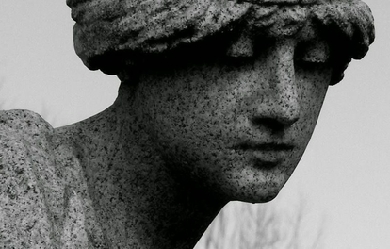
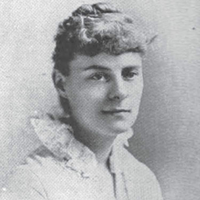
Lizette Woodworth Reese (January 9, 1856– December 17, 1935) was an American poet. Reese was born in the Waverly section of Baltimore, Maryland to Louisa Gabler and David Reese. She also had a twin sister named Sophia. Educated in Baltimore’s public schools, Reese graduated from Eastern High School (Baltimore), where a memorial for her stands today. After graduation, she became a school teacher at St. John’s Parish School in 1873. The following year, Reese published her first poem, “The Deserted House,” in Southern Magazine. She continued to publish in various magazines until her first self-published anthology, A Branch of May, in 1887. Subsequent books followed in 1891 and 1896, A Handful of Lavender and A Quiet Road, respectively. During the late 1890s and early 1900s, Reese wrote infrequently. However, her sonnet, “Tears,” published in Scribner’s Magazine in 1899, garnered her praise and recognition, particularly from fellow Baltimore writer, H. L. Mencken, who stated that Reese’s work was “one of the imperishable glories of American literature." In 1918, Reese retired from teaching after having worked her last few years at Western High School (Baltimore). In 1931, Reese was named poet laureate of Maryland by the General Federation of Women’s Clubs. She was also honorary president of thee Poetry Society of Maryland and co-founder of the Women’s Literary Club of Baltimore. Reese died on December 17, 1935. She is buried at the St. John’s Episcopal Church. After her death, Reese’s friend and sculptor, Grace Turnbull was commissioned to create a monument to her work. The marble statue, entitled “The Good Shepherd” stands on the old grounds of Eastern High School, Reese’s alma mater, in Waverly.

Alastair Reid (Whithorn, 22 March 1926 – Manhattan, 21 September 2014) was a Scottish poet and a scholar of South American literature. He was known for his lighthearted style of poems and for his translations of South American poets Jorge Luis Borges and Pablo Neruda. Although he was known for translations, his own poems had gained notice during his lifetime. He had lived in Spain, Switzerland, Greece, Morocco, Argentina, Mexico, Chile, the Dominican Republic, and in the United States. During the editorship of William Shawn he wrote for The New Yorker magazine, but his main income was from teaching. Reid was born at Whithorn in Galloway, Scotland, the son of a clergyman. During the Second World War he served in the Royal Navy decoding ciphers. After the war he studied Classics at the University of St Andrews and briefly taught Classics at Sarah Lawrence College, New York. In the mid-1950s he travelled to Mallorca, spending some time working as the secretary of Robert Graves. In 1984, in an interview for the Wall Street Journal, Reid admitted fabricating many details of his reporting from Spain for the New Yorker, including inventing places and ascribing statements to composite characters. He said these inventions were an attempt to present "a larger truth, of which facts form a part."[2] In his book, Whereabouts, Reid counters this article with the following: These pieces were at the center of a curious storm that blew up in the American press during June of 1984. A year or so before, I had addressed a seminar at Yale University on the wavering line between fact and fiction, using examples from various writers, Borges among them, and from my own work. A student from the seminar went on to become a reporter and published a piece in the Wall Street Journal that charged me with having made a practice of distorting facts, quoting the cases I had cited in the seminar. Many newspaper editorials took up the story as though it were fact, and used it to wag pious fingers at the New Yorker. A number of columnists reproved me for writing about an "imaginary" Spanish village, a charge that would have delighted the flesh-and-blood inhabitants.... Not a single one of my critics, as far as I could judge, had gone back to read the pieces in question. He published more than forty books of poems, translations, and travel writing, including Ounce Dice Trice, a book of word-play for children (illustrated by Ben Shahn), and two selections from his works: Outside In: Selected Prose and Inside Out: Selected Poetry and Translations (both 2008). During the 1980s and 1990s he spent much of his time on a ginger plantation in Samaná, Dominican Republic, until 2003 when tourism boomed in the area. Reid died on 21 September 2014, aged 88, due to a gastric bleed during treatment for pneumonia. References Wikipedia—http://en.wikipedia.org/wiki/Alastair_Reid

Hey y'all! I'm Samantha, I am 22 years old and getting ready to graduate from LSU. When it comes to writing my passion is poetry. I have been writing poems since my freshman year of high school. Poetry is my escape and my way of venting. I love to travel! My dream job would be to write for a travel magazine and this way I could travel the rest of my life and experience all the world has to offer. Not only have a posted a few of my poems, but I have written and posted some of my travel pieces from my recent trip to Europe. I hope y'all enjoy reading my work!

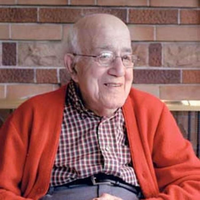
Carl Rakosi (November 6, 1903– June 25, 2004) was the last surviving member of the original group of poets who were given the rubric Objectivist. He was still publishing and performing his poetry well into his 90s. Early life Rakosi was born in Berlin and lived there and in Hungary until 1910, when he moved to the United States to live with his father and stepmother. His father was a jeweler and watchmaker in Chicago and later in Gary, Indiana. The family lived in semi-poverty but contrived to send him to the University of Chicago and then to the University of Wisconsin–Madison. During his time studying at the university level, he started writing poetry. On graduating, he worked for a time as a social worker, then returned to college to study psychology. At this time, he changed his name to Callman Rawley because he felt he stood a better chance of being employed if he had a more American-sounding name. After a spell as a psychologist and teacher, he returned to social work for the rest of his working life. Early writings At the University of Wisconsin–Madison, Rakosi edited the Wisconsin Literary Magazine. His own poetry at this stage was influenced by W. B. Yeats, Wallace Stevens, and E. E. Cummings. He also started reading William Carlos Williams and T. S. Eliot. By 1925, he was publishing poems in The Little Review and Nation. Pound and the Objectivists By the late 1920s, Rakosi was in correspondence with Ezra Pound, who prompted Louis Zukofsky to contact him. This led to Rakosi’s inclusion in the Objectivist issue of Poetry and in the Objectivist Anthology. Rakosi himself had reservations about the Objectivist tag, feeling that the poets involved were too different from each other to form a group in any meaningful sense of the word. He did, however, especially admire the work of Charles Reznikoff. Later career Like a number of his fellow Objectivists, Rakosi abandoned poetry in the 1940s. After his 1941 Selected Poems he dedicated himself to social work and apparently neither read nor wrote poetry. Years earlier, shortly after his twenty-first birthday, Rakosi had legally changed his name to Callman Rawley, believing that he would not find work with his foreign-sounding name. Under his adopted name, he served as head of the Minneapolis Jewish Children’s and Family Service from 1945 until his retirement in 1968. A letter from the English poet Andrew Crozier about his early poetry was the trigger that started Rakosi writing again. His first book in 26 years, Amulet, was published by New Directions in 1967 and his Collected Poems in 1986 by the National Poetry Foundation. These were followed by several more volumes and by readings across the United States and Europe. In early November 2003, Rakosi celebrated his 100th birthday with friends at the San Francisco Public Library. Upon his death Jacket Magazine editor John Tranter observed the following: Poet Carl Rakosi died on Friday afternoon June 25 at the age of 100, after a series of strokes, in his home in San Francisco. My wife Lyn and I were passing through California in November 2003, and we stopped by to have a coffee with Carl at his home in Sunset. By a lucky coincidence, it happened to be his 100th birthday. He was, as always, kind, thoughtful, bright and alert, and as sharp as a pin. We felt privileged to know him. External links Rakosi at Modern American Poetry The Carl Rakosi Papers in the Mandeville Special Collections Library at UC San Diego Carl Rakosi Reading and Interview on KPFA’s Ode To Gravity, 13 May 1971 (from The Internet Archive) Obituary in The Guardian, UK Carl Rakosi feature at Jacket Magazine includes Rakosi in conversation with Tom Devaney & Olivier Brossard; link to audio recordings at University of Pennsylvania, and poems, dedications & remembrances from Jane Augustine, Robert Creeley, Laurie Duggan, Michael Heller and Kent Johnson “Add-Verse” a poetry-photo-video project Rakosi participated in References Wikipedia—https://en.wikipedia.org/wiki/Carl_Rakosi

I'm just another person trying to spread this art in the form of words to convey an imagine that can't be seen but only heard. Don't expect a traditional poem cause my writing has no structure Hope you enjoy reading my work, please feel free to leave comments good or bad! I would love to hear what you all think of it.
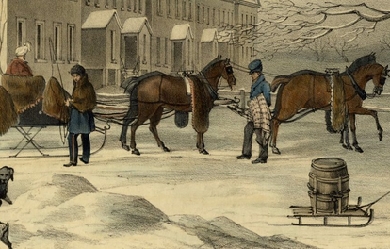
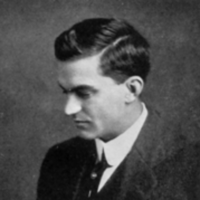
William Harris Lloyd Roberts (31 October 1884– 28 June 1966) was a Canadian writer, poet, and playwright. He was born in Fredericton, New Brunswick, the son of noted Canadian poet Charles George Douglas Roberts and Mary Isabel Fenety. After an education by private tutors, he attended King’s Collegiate School then, in 1905, Fredericton High School. In 1903 he performed clerical work at McClure’s magazine. From 1904 until 1907 he was an assistant editor at the Outing magazine, based in New York City. He wrote short stories and poetry for various magazines, plus performing part-time newspaper work starting in 1911. On January 1, 1914, he was married to Helen Hope Farquhar Bolmain. The couple had a daughter, Patricia Bliss, before Helen died. In 1912, he became editor of immigration literature for the Canadian Department of Interior in Ottawa. Two years later, he served as a correspondent for the Timer and Grazing branch of the Interior Department in Ottawa. On August 15, 1914, he married his second wife, Lila White; the couple divorced shortly thereafter. After 1920 he retired from work in order to devote all of his time to writing fiction, drama, poetry, and special articles. From 1925 until 1939 he was a correspondent for the Christian Science Monitor, then he performed public relations for the Royal Canadian Mounted Police up to 1945. His third marriage in 1943 was to Julia Bristow, and they would have two daughters. Bibliography * England Over Seas (1914) * Come Quietly, Britain (1915) * Mother Doneby (1916) * The Book of Roberts (1923) * Along the Ottawa (1927) * I Sing of Life (1937) References Wikipedia—https://en.wikipedia.org/wiki/William_Harris_Lloyd_Roberts
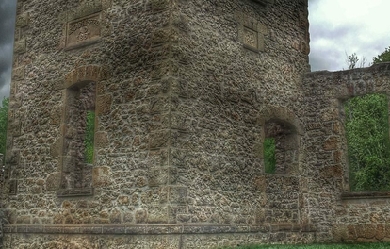
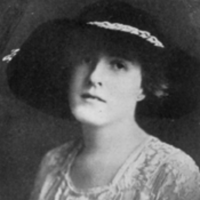
Agnes Ethelwyn Wetherald was born of English-Quaker parents at Rockwood, Ontario, April 26th, 1857. Her father was the late Rev. William Wetherald, who founded the Rockwood Academy about the middle of the last century, and was its principal for some years. He was a lover of good English, spoken and written, and his talented daughter has owed much to his careful teaching. He was the teacher whom the late James J. Hill, the railway magnate, had held in such grateful remembrance. Additional education was received by Miss Wetherald at the Friends' Boarding School, Union Springs, N.Y., and at Pickering College. Miss Wetherald began the writing of poetry later in life than most poets and her first book of verse, The House of the Trees and Other Poems, did not appear until 1895. This book at once gave her high rank among women poets. Prior to this, she had collaborated with G. Mercer Adam on writing and publishing a novel, An Algonquin Maiden, and had conducted the Woman's Department in The Globe, Toronto, under the nom de plume, 'Bel Thistlewaite.' In 1902, appeared her second volume of verse, Tangled in Stars, and, in 1904, her third volume, The Radiant Road. In the autumn of 1907, a collection of Miss Wetherald's best poems was issued, entitled, The Last Robin: Lyrics and Sonnets. It was warmly welcomed generally, by reviewers and lovers of poetry. The many exquisite gems therein so appealed to Earl Grey, the then Governor-General of Canada, that he wrote a personal letter of appreciation to the author, and purchased twenty-five copies of the first edition for distribution among his friends. For years Miss Wetherald has resided on the homestead farm, near the village of Fenwick, in Pelham Township, Weland county, Ontario, and there in the midst of a large orchard and other rural charms, has dreamed, and visioned, and sung, pouring out her soul in rare, sweet songs, with the naturalness of a bird. And like a bird she has a nest in a large willow tree, cunningly contrived by a nature-loving brother, where her muse broods contentedly, intertwining her spirit with every aspect of the beautiful environment.
The author was born in México City, in 1964; He graduated from the Universidad Nacional Autónoma de México as an Orthopaedic Surgeon. His passions are, his children: Nadezda, Bruno, and his mother: Inés, to who he dedicates most of his time. About his affections: anthropology, world's history, science fiction, to enjoy a nice and spicy meal with a fine cigar, rock music... The Beatles!, gardening, to take a long afternoon walking and sports. His heroes are John Winston Ono Lennon, Vincent Van Gogh... And James Tiberius Kirk. “Life is too short to live with fear about feelings... I wish I could turn back time, to let know those who have left us, that in my life... I loved them.”

I'm 19 years old. I've been writing poetry for about 3-4 years. I do post my poems on another site called 'Booksie'. I'm just looking for another place to post my poetry and get more feedback. I'm a very loving, and caring person. I have a very open heart, so I tend to get hurt quite easily and I never learn from it.
I'm from Jersey City, New Jersey, currently a full time student at NJCU obtaining a degree in English and Secondary Education. I love poetry and see it as an escape. I'm a fan of the arts, I love reading work that others produce, and I love what I do. Anyone hosting open mics in the area, let me know. Thanks! Other than that, I'm 23, passionate about poetry, in love with a wonderful woman, and have big plans for the future. I hope you enjoy my work. Follow me, share me, tell me what you think!
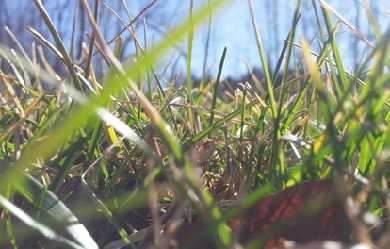

I'm young in age but my soul is wise and carries many messages that I hope you take the time to listen to. Music and other poets are my main source of inspiration but I'm still very capable of gaining inspiration from the small things like the way the grass wavers in the wind or how rain drops cling to my eyelashes when I'm dancing in the rain. I was born to create and words flow through my veins and impatiently rest beneath my tongue aching to be heard. My poems are cathartic and self healing but they often connect with others and help others as well. I enjoy writing for others and being their voice to portray how they feel when they lack the words needed. I live to write and I write to live. I want to improve and have constructive criticism, but compliments also help out and make me feel appreciated :)

Born and raised in Limpopo by a single parent.Went to 5 different schools in my life.I have one little sister and a few friends.i absolutely enjoy poetry and music,im a debator and i see the world in a different perspective from most people.Im 19years old and i completed high school 2012.im currently in Tertiary studying electrical engineering.

i am just a girl. I am just another human trying to succeed and hoping that one day i will. The only difference between me and you is that i have the will to get up and do it, and i want to encourage others to do the same. If you like my writing please share my page and get your friends to read them too. I hope that my writing helps each any everyone who chooses to read it, and i want to thank those of you who actually do wish to spend their time doing so.
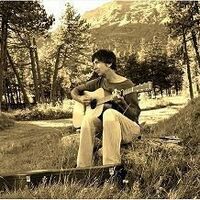
I'm a singer songwriter from North Wales and maybe at times a Poet :) My real passion is writing, music and guitar. I've traveled quite a lot over the last 2 years to gain inspiration and I'm trying to grow all the time. I can't imagine my life without writing and music and I always write from the heart.

Hello my name is Abby! I'm a very interesting person. Apparently I have a lot of energy to where I make a pot of coffee nervous. I'm very artistic and outgoing. I love CATS absolutely and I recently just got married to my best friend and it's been wonderful! I'm hoping to see the world one day. Great thing is my husband is in the US Airforce. Poetry has been great therapy to me during the good times and the bad times. My strongest points in poetry is actually during the bad times. Although those moments were the strongest moments in my life. It simply was easier for words to flow out of my pen. Poetry is beautiful and I just love the symbolism and words people use to describe events, feelings, or things. I'm just glad to be a part of it and to use my creativity. I hope that you enjoy reading my poetry just as much as I've enjoyed writing them!



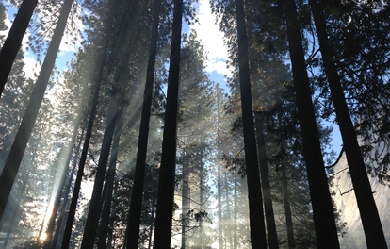

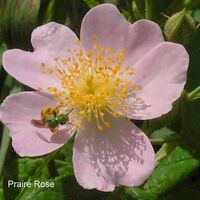

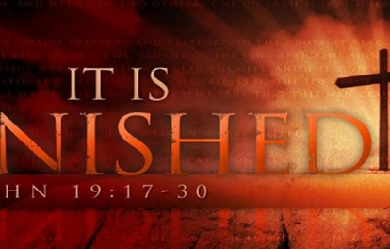
.jpg)



